|
|
|
|
Answer to 'Name the aircraft' in 'Odds & Ends' The Bristol Type 170 Freighter is a British twin-engine aircraft designed and built by the Bristol Aeroplane Company as both a freighter and airliner. Its best known use was as an air ferry to carry cars and their passengers over relatively short distances. A passenger-only version was also produced, known as the Wayfarer. The Freighter was developed during the Second World War, having attracted official attention from the British Air Ministry, which sought the development of a rugged vehicle capable of carrying various cargoes, including a 3-ton truck. Various changes to the design were made to accommodate their requirements, but being completed too late to participate in the conflict, the majority of sales of the Freighter were to commercial operators. In response to customer demand, an enlarged version to maximize vehicle-carrying capacity, known as the Bristol Superfreighter, was developed. Source: en.wikipedia.org/wiki/Bristol_Freighter Editors' Note: Trans-Canada Air Lines owned three type 31. Registered CF-TFX, CF-TXY and CF-TXZ, fin #501 - 502 - 503. Delivered September / October 1953 and sold to Central Northern Airways on December 22, 1955. |
|
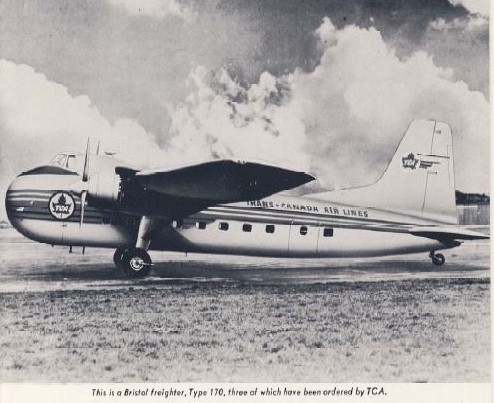 |
|
|
Since the inception of C1 passes for Air Canada retirees, the Pionairs has been advocating for an increase in the annual amount of C1/J’s to match previous upgrade levels. Pionairs is very pleased to announce that the 2023 C1/J pass allotment for retirees will increase from 4 passes annually to 6 annually. All other C1/J pass conditions remain unchanged. One more instance of the National Pionairs lobbying successfully with the company. If you are not a member of the Pionairs, why not reconsider. |
|
|
From Propliner 2022 magazine. Trans-Canada Air Lines Lockheed L-1049G Super Constellation CF-TGF (c/n 4563) pictured taxiing at Heathrow London Airport (LHR) on July 18, 1959. Photo by James Davidson. |
|
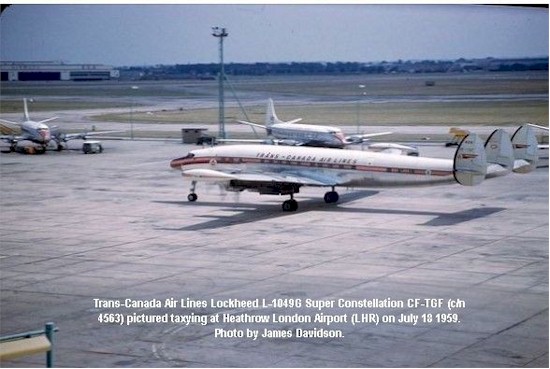 |
|
|
Great things developed for Trans-Canada Air Lines soon after World War II. New aircraft like the DC-3 and North Star were the biggest change, allowing for a much expanded route structure. More than 20 newly rebuilt DC-3's were delivered by Canadair starting in 1945, so the well-worn fleet of Lockheed’s was sold. No doubt the planes went at give-away prices. Toronto-based buyers alone included Imperial Oil, which took CF-TDB, BA Oil – CF-TCH and CF-TDE, Massey Harris farm equipment company in Toronto - CF-TDG and Noranda Mines – CF-TCV. For their new role as corporate planes, the basic old TCA Lockheeds were gutted, then rebuilt with swish interiors. As such, they served into the early 1960s – Rolls-Royces of the airways, the granddaddies of today’s Global Express. The route map shows how TCA, recently having added Canadair C-4 North Stars, was eagerly expanding domestically and on the Atlantic. As you can see, 1947 advert graphics could be quite basic. Source: canavbooks.wordpress.com |
|
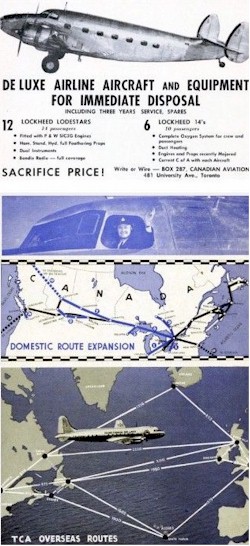 |
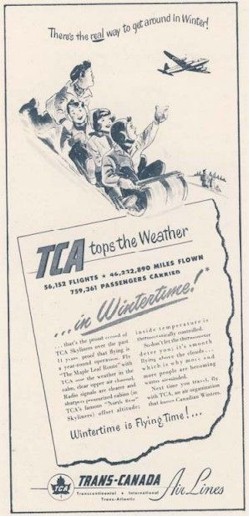 |
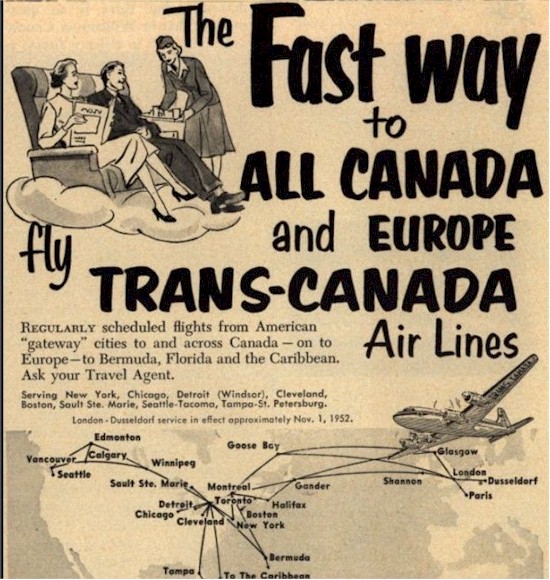 |
|
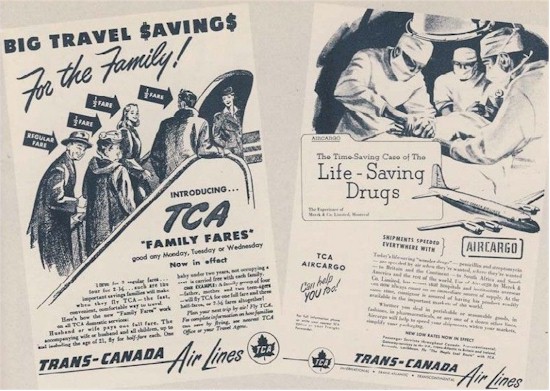 |
|


 Found on Facebook
Found on Facebook